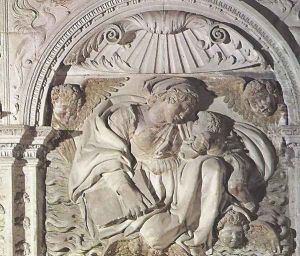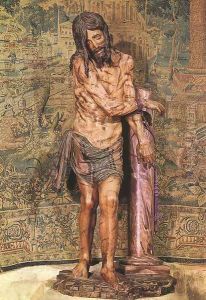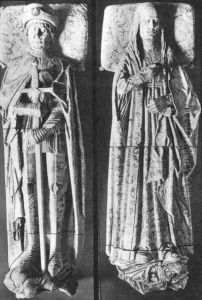Diego de Siloe Paintings
Diego de Siloé was a Spanish Renaissance architect and sculptor, renowned for his work during the 16th century that represents a transition from the Gothic to the Renaissance style. Born around 1495 in Burgos, Spain, he was the son of the accomplished Gothic sculptor Gil de Siloé, from whom he likely received his initial training.
Diego's early work was primarily in sculpture, and he executed several important commissions in this medium. One of his most notable early works is the tomb of Cardinal Diego Hurtado de Mendoza in the cathedral of Sevilla, which shows a blend of Gothic and Renaissance elements.
Around the year 1520, Diego de Siloé moved to Granada, where his work transitioned more towards architecture. His most significant architectural achievement is the Granada Cathedral, which he began in 1528. He introduced Renaissance elements to the Gothic foundations laid by his predecessor, Enrique Egas, creating an innovative and harmonious design that is considered a masterpiece of Spanish Renaissance architecture. The cathedral's main chapel, the Capilla Mayor, is particularly lauded for its grandeur and the integration of sculptural elements within the architectural design.
Another of his architectural accomplishments is the Monastery of San Jerónimo in Granada, where he combined Gothic structure with Renaissance decorative motifs, creating a unique and graceful edifice. His work on this monastery is particularly noted for the stunning facade and the two-tiered cloister.
De Siloé was also influential in the design of the Palace of Charles V, which is located within the famous Alhambra palace complex. Although the palace was not completed in his lifetime, his initial plans and designs laid the groundwork for what is considered one of the most important examples of Spanish Renaissance architecture.
Diego de Siloé's influence extended beyond his own projects, as he also had an impact on other architects and sculptors of the time. His blending of Gothic traditions with the emerging Renaissance style helped to establish a distinctly Spanish form of Renaissance art and architecture. He passed away in Granada in 1563, leaving behind a legacy that would continue to inspire and influence the trajectory of Spanish architecture and sculpture for generations.


